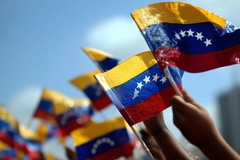
- Industry news
Industry news
- Category news
Category news
- Reports
- Key trends
- Multimedia
- Journal
- Events
- Suppliers
- Home
- Industry news
Industry news
- Category news
Category news
- Reports
- Key trends
- Multimedia
- Events
- Suppliers
Rabobank: Oilseeds Complex Traded Volumes Overtake Grains for the First Time

Oilseeds complex traded volumes overtook grains traded volumes for the first time ever in 2010/11. Oilseeds are the crop most leveraged to world GDP growth as the meal component is critical to animal protein production and the oil fraction is critical to the production of processed foods. Total value of grain and oilseed trade flows has trebled in the last six years, from $70 billion to $210 billion.

Mar 14 2012 – Rabobank, the leading global Food & Agri Bank, presented their new World Grains & Oilseeds Map at the ‘Global Grain Asia” event in Singapore.
Oilseeds complex traded volumes overtook grains traded volumes for the first time ever in 2010/11. Oilseeds are the crop most leveraged to world GDP growth as the meal component is critical to animal protein production and the oil fraction is critical to the production of processed foods. Total value of grain and oilseed trade flows has trebled in the last six years, from $70 billion to $210 billion.
David C. Nelson, Rabobank Global Strategist Grains & Oilseeds, “The global trade of grains and oilseeds is shifting towards emerging economies, in both origination and destination. Brazil for example, has redirected a huge part of its soybeans exports from static outlets like Europe to very fast growing destinations such as China. This puts pressure on sourcing options for developed countries.”
Demand and supply growth are coming from different places. Key growing destination regions are: China, India, North Africa and respectively in Soybeans, Palm Oil and Wheat. Key growing origination regions are: Latin America (soybeans); Malaysia and Indonesia (palm oil); BSR (wheat).
The core grains and oilseeds supply regions have been unable to match surging demand in the rest of the world. Temporary imbalances have resulted in stocks decreasing and consequently in extraordinary price volatility.
Rabobank also shows a trend of “astronomical growth” for Chinese soybean imports due to rapid industrialisation of meat production. Tighter trade and investment relations between China and South America, is accounting for more than 54 percent of China’s total soybean imports, with Brazil and Argentina accounting for 34 percent and 20 percent, respectively.
The bank also pointed out that Indonesia is now close to overtaking Malaysia as the largest exporter of palm oil in the world. The Black Sea region is driving incremental wheat exports but causing global market volatility.










